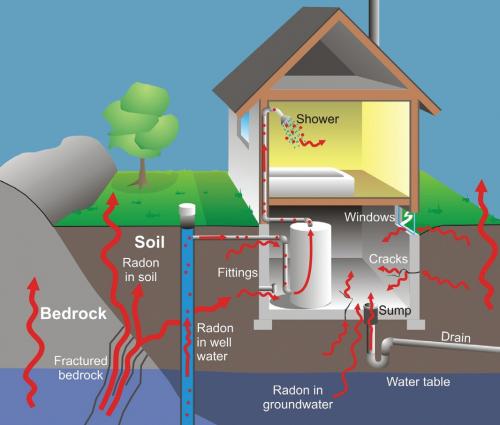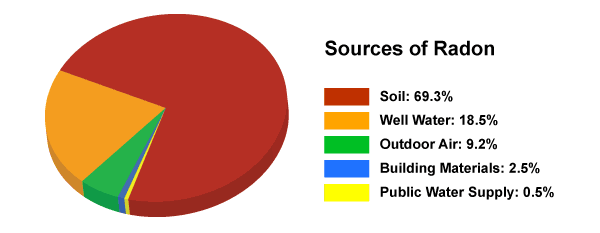Dangers of Radon in your Home or Cottage

Radon is a naturally occurring radioactive gas produced by the breakdown of the uranium in soil, rocks, and water and is present in all houses. Left unmitigated, high levels of radon can present significant health risks, so testing is an important element of responsible home/cottage ownership.
 How does Radon Enter your home.
How does Radon Enter your home.
It is a radioactive gas that is odorless, colorless, and tasteless. It is produced by the breakdown of uranium found in sediment (soil), rocks, and water. When radon is released into the atmosphere it gets diluted and poses negligible risk to human health. However, if radon accumulates inside a home, it can pose a serious health risk.
Radon is found throughout Canada, but concentrations differ depending on the composition of the bedrock or sediment.
What are the Dangers of high level Radon?
Left unmitigated, high levels of radon in a home/cottage can create a long-term health risk for residents. When inhaled, radon gas particles remain in lung tissue and begin to decay. As the radon particles decay, they release bursts of radiation that can damage the lung tissue cells. Over time, the cell damage can lead to the development of lung cancer.
Radon is the second leading cause of lung cancer and it is estimated that 16 per cent of lung cancer deaths among Canadians are attributable to indoor radon exposure. The risk of developing lung cancer from radon depends on:
- the concentration of radon in the air that is breathed;
- the duration of exposure to radon; and
- whether the person is a smoker.
How are homes/cottages tested for radon?
Radon testing is easy and inexpensive. There are two options: purchase a do-it-yourself test kit or hire a radon measurement professional.
Prolab DIY kit from Home Depot costs $ 13.99 or the long term Radon Gas Test Kit costs $32.69
Can radon problems always be fixed??
Excessive radon levels can be successfully mitigated in every type of home. It is best to consult with a radon professional trained to understand how radon enters buildings and how resulting radiation levels can be effectively managed to ensure the safety of all occupants. The types of mitigation systems vary depending on the radon source and type of home.
Resources
- Visit Health Canada’s website at www.healthcanada.gc.ca/radon
- Visit the Canadian Association of Radon Scientists and Technologists (CARST) website at www.carst.ca
- Vist the Canadian Lung Association's website at www.lung.ca/protect-protegez/pollution-pollution/indoor-interieur/radon-radon_e.php
- Find more information about the Canadian National Radon Proficiency Program (C-NRPP) on their website, http://c-nrpp.ca
- Learn more about Radon Environmental Management Corp. on their website, www.radoncorp.com












